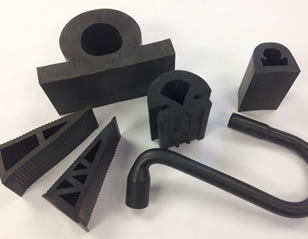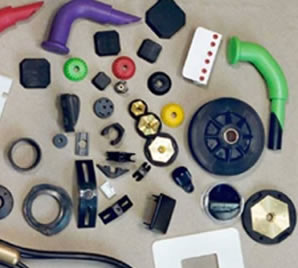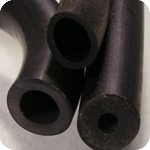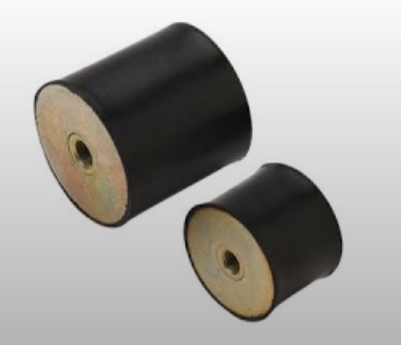The process of rubber moldings has helped shape the way that we use rubber in today’s world. Rubber molding consists of shaping rubber into the desired shape. Sometimes the rubber is mixed with other materials to make the rubber more flexible, tougher, or resistant to UV rays and cracking. In general, there are three main types of rubber moldings that help create the rubber products used today. These processes include, compression molding, injection molding, and transfer rubber molding.
Compression molding: Compression molding is the simplest form of rubber molding. In this process, a sheet of rubber is placed inside a mold. The two halves of the mold are pressed into the sheet, forcing the sheet of rubber to take on the shape of the mold. This is one of the oldest forms of rubber molding, and it is also the crudest form of molding. Only the simplest shapes can work with this form of molding, and it often produces rubber pieces with errors in the final shape.
Injection molding: Injection molding is the most precise way to shape rubber. In this process, the rubber is heated until it has a toothpaste-like consistency. The rubber is then injected into a mold and allowed to harden. Rubber pieces created this way are strong, unlikely to loose their shape, and retain the exact shape of the mold with few inconsistencies.
Transfer molding: Transfer molding is somewhat of a mix between compression and injection molding. In this process, a large slug of rubber is placed into a pot. A machine forces the slug into the mold, which causes the rubber to take on the shape of the mold. Rubber pieces made this way have higher quality than compression pieces, but less than injection pieces.
Compression molding: Compression molding is the simplest form of rubber molding. In this process, a sheet of rubber is placed inside a mold. The two halves of the mold are pressed into the sheet, forcing the sheet of rubber to take on the shape of the mold. This is one of the oldest forms of rubber molding, and it is also the crudest form of molding. Only the simplest shapes can work with this form of molding, and it often produces rubber pieces with errors in the final shape.
Injection molding: Injection molding is the most precise way to shape rubber. In this process, the rubber is heated until it has a toothpaste-like consistency. The rubber is then injected into a mold and allowed to harden. Rubber pieces created this way are strong, unlikely to loose their shape, and retain the exact shape of the mold with few inconsistencies.
Transfer molding: Transfer molding is somewhat of a mix between compression and injection molding. In this process, a large slug of rubber is placed into a pot. A machine forces the slug into the mold, which causes the rubber to take on the shape of the mold. Rubber pieces made this way have higher quality than compression pieces, but less than injection pieces.
 Rubber Extrusions
Rubber Extrusions Rubber Molding
Rubber Molding Rubber to Metal Bonding
Rubber to Metal Bonding Rubber Tubing
Rubber Tubing Vibration Absorbers
Vibration Absorbers Castings & Forgings
Castings & Forgings Bulk Material Handling
Bulk Material Handling Electrical & Electronic Components
Electrical & Electronic Components Flow Instrumentation
Flow Instrumentation Hardware
Hardware Material Handling Equipment
Material Handling Equipment Metal Cutting Services
Metal Cutting Services Metal Forming Services
Metal Forming Services Metal Suppliers
Metal Suppliers Motion Control Products
Motion Control Products Plant & Facility Equipment
Plant & Facility Equipment Plant & Facility Supplies
Plant & Facility Supplies Plastic Molding Processes
Plastic Molding Processes Pumps & Valves
Pumps & Valves Recycling Equipment
Recycling Equipment Rubber Products & Services
Rubber Products & Services